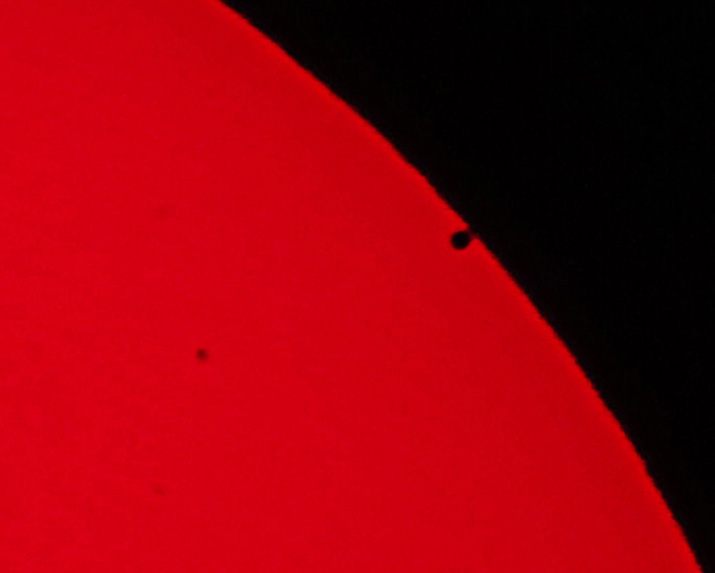
|
Black Drop Effect
Date: May 09, 2016 - Location: Dark Sky Observatory Collaborative, Fort Davis, TX Click on the image below to view at higher resolution. |

|
On May 9, 2016 the planet Mercury crossed in front of the sun as seen from Earth. This alignment is an infrequent event only repeated about 13 times a century1. The last Mercury solar transit occurred on Nov. 8, 20061 and the next transit will be on Nov. 11, 20191.
The image above shows a strange deformation of Mercury's normally circular planetary disk. This optical occurance is commonally referred to as the Black Drop Effect. Shortly after the planet crosses the edge of the Sun (1st contact) and also just before it exits the Sun's disk (3rd contact) the planetary disk expands outwardly and blends into the bright edge, or limb, of the Sun. This deformation only lasts for a few seconds. During this brief period, the planet's shape resembles a "black drop". The cause of this phenomenon is not fully understood is the subject of scientific interest and research.
The small, somewhat difused, dark spot to the lower left of Mercury's disk is a "sunspot".
1http://eclipse.gsfc.nasa.gov/transit/catalog/MercuryCatalog.html
|